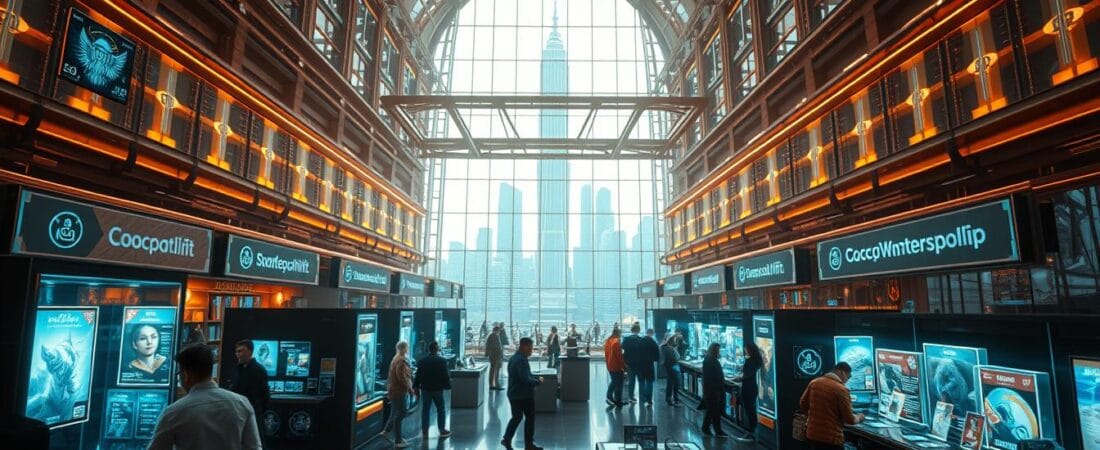The digital asset landscape has seen explosive growth, with the NFT market valuation surpassing $40 billion in 2023, according to the Chainalysis report. This staggering figure underscores the rapid adoption of blockchain technology and its transformative impact on industries like art, gaming, and virtual real estate.
Platforms have evolved significantly, focusing on multi-chain interoperability and specialized features. Security, fees, and blockchain support remain critical factors for users. Emerging trends, such as AI-curated collections and metaverse integration, are shaping the future of this space.
As the market diversifies, understanding the key evaluation criteria becomes essential. This article explores the top platforms of 2025, offering insights into their unique strengths and innovations.
Key Takeaways
- The NFT market valuation exceeded $40 billion in 2023.
- Platforms are evolving with multi-chain interoperability.
- Security and fees are crucial evaluation criteria.
- AI-curated collections are a growing trend.
- Metaverse integration is reshaping the digital asset landscape.
What Makes a Great NFT Marketplace?
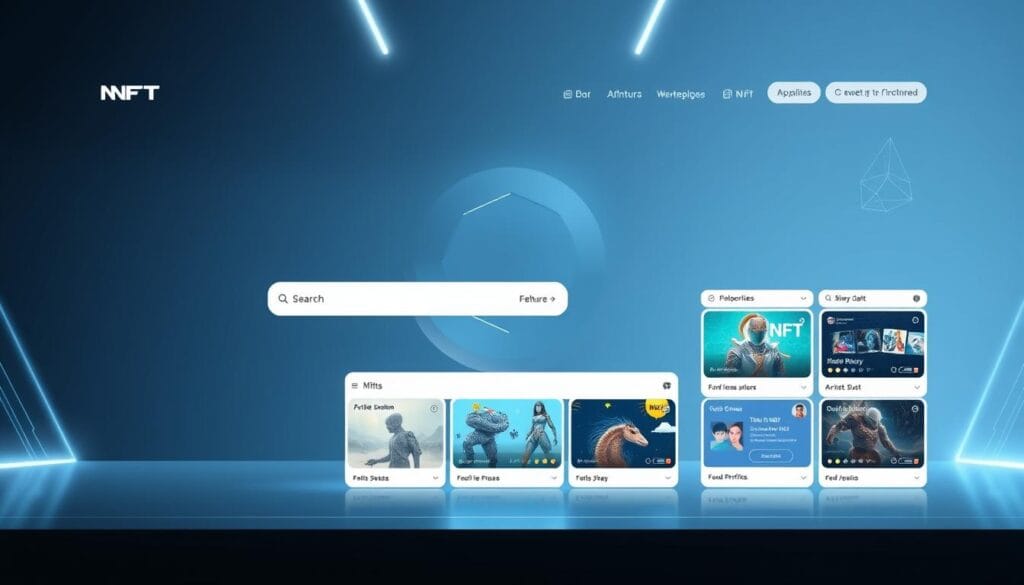
The integration of multi-chain support has become a game-changer for asset liquidity. Platforms that offer compatibility with Ethereum, Solana, and Polygon enable users to trade seamlessly across ecosystems. For instance, Magic Eden’s cross-chain expansion boosted trading volume by 344% in 2023. This flexibility ensures broader access to digital assets and enhances user engagement.
Key Features to Look For
When evaluating a platform, wallet integration and gas fee optimization are essential. These features streamline the trading process, making it faster and more cost-effective. Additionally, smart contract auditing ensures the security and reliability of transactions. Platforms like Rarible, which enforced royalty payments, saw a 637% growth in activity. This highlights the importance of fair compensation for creators.
Another critical aspect is multi-chain compatibility. It not only increases asset liquidity but also attracts a diverse user base. For example, Blur’s pro trader tools led to a 22% rise in institutional participation in 2024. These tools include advanced analytics and intuitive bidding systems, catering to both casual and professional traders.
User Experience and Security
A platform’s user experience plays a pivotal role in its success. Features like portfolio analytics dashboards and mobile optimization make trading more accessible. Intuitive interfaces ensure that even beginners can navigate the platform with ease.
Security is equally important. Platforms must implement two-factor authentication, cold storage integration, and transaction verification protocols. These measures protect users’ assets and build trust in the platform. As the digital asset landscape evolves, these features will continue to define the best platforms in the industry.
Top NFT Marketplaces in 2025
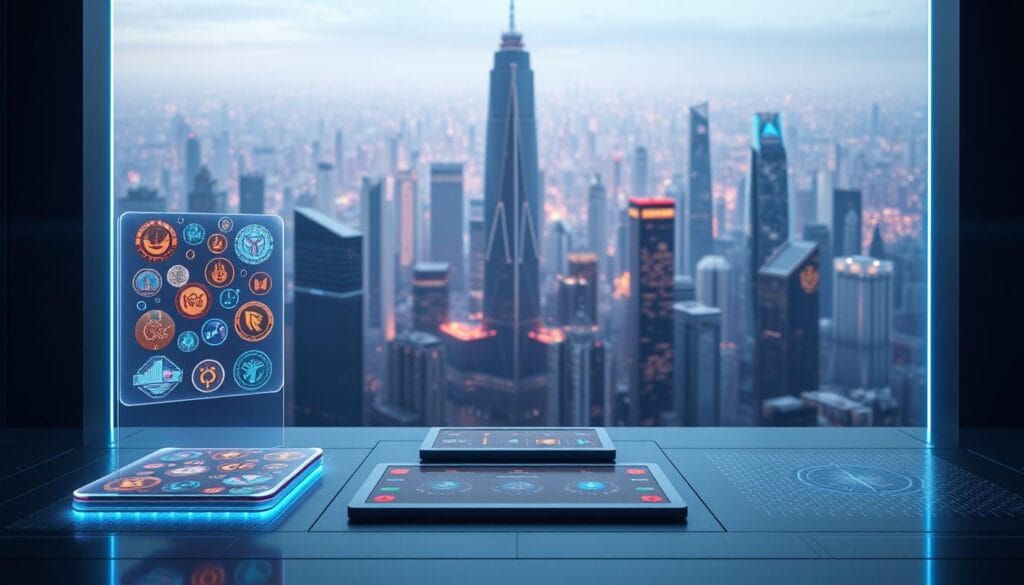
As the digital asset space matures, top platforms are redefining standards for trading and user experience. In 2025, the competition is fierce, with each platform offering unique features to attract users. This section explores the leading platforms, their specialties, and how they stand out in a crowded market.
OpenSea: The Industry Leader
OpenSea continues to dominate the digital asset landscape, boasting over $34 billion in historical sales and more than 80 million listed assets. Its 2.5% transaction fee remains competitive, making it a preferred choice for both casual and professional users. The platform’s versatility and extensive collections ensure it remains a top contender in 2025.
Magic Eden: Cross-Chain Dominance
Magic Eden has solidified its position as a leader in cross-chain trading, processing 90% of Solana-based transactions. Its strategic integration of Bitcoin NFTs through Ordinals has expanded its user base significantly. With a focus on multi-chain compatibility, Magic Eden offers unparalleled liquidity and accessibility for traders.
Blur: The Pro Trader’s Choice
Blur has emerged as the go-to platform for high-frequency traders, thanks to its zero-fee structure and advanced analytics suite. Its aggregation tools have reduced slippage by 18%, making it a favorite among professional users. Blur’s real-time data and intuitive interface cater to those seeking precision and efficiency in their trades.
For those planning their financial future, understanding the best tools for investment is equally important. As the digital asset space evolves, these platforms will continue to shape the future of trading and collections.
In-Depth NFT Marketplace Reviews
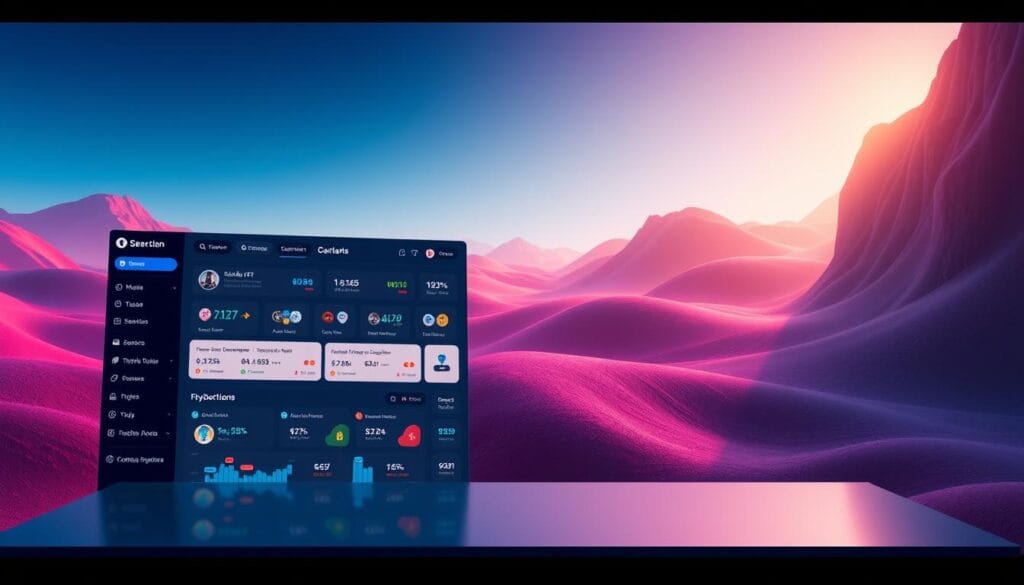
The evolution of digital asset platforms has brought unique features tailored to diverse user needs. From versatile trading options to exclusive art collections, these platforms are redefining how creators and collectors interact. This section delves into the standout features of three leading platforms, highlighting their strengths and innovations.
OpenSea’s Versatility and Reach
OpenSea remains a dominant force in the digital asset space, offering unparalleled versatility. Its support for the ERC-1155 standard enables batch minting, making it a favorite among enterprise clients. This feature streamlines the creation process, allowing users to manage multiple assets efficiently.
The platform’s extensive reach ensures access to a wide range of collections, from art to virtual real estate. Its user-friendly interface and robust tools make it a go-to choice for both beginners and seasoned traders. OpenSea’s commitment to innovation continues to set industry standards.
Rarible’s Decentralized Approach
Rarible stands out with its decentralized governance model, empowering its community. Through its DAO structure, 85% of royalties are distributed to creators, ensuring fair compensation. This approach fosters a strong sense of ownership and participation among users.
Additionally, Rarible’s RARI token staking offers a 12% APY for governance participants. This incentivizes active involvement in platform decisions, creating a vibrant and engaged community. Rarible’s focus on decentralization aligns with the ethos of blockchain technology.
Foundation’s Exclusive Art Focus
Foundation has carved a niche with its invitation-only model, maintaining a 0.4% acceptance rate. This exclusivity ensures high-quality collections, attracting elite artists and collectors. In 2024, its AI-generated “Neural Renaissance” collection set an auction record of $89 million.
The platform’s low 5% fee structure contrasts favorably with competitors, making it an attractive option for creators. Foundation’s emphasis on art and exclusivity has solidified its position as a premier destination for high-end digital art.
For those exploring financial tools, understanding the best options for investment is equally important. As digital asset platforms evolve, they continue to shape the future of creator and collector interactions.
Fees and Costs Across Platforms
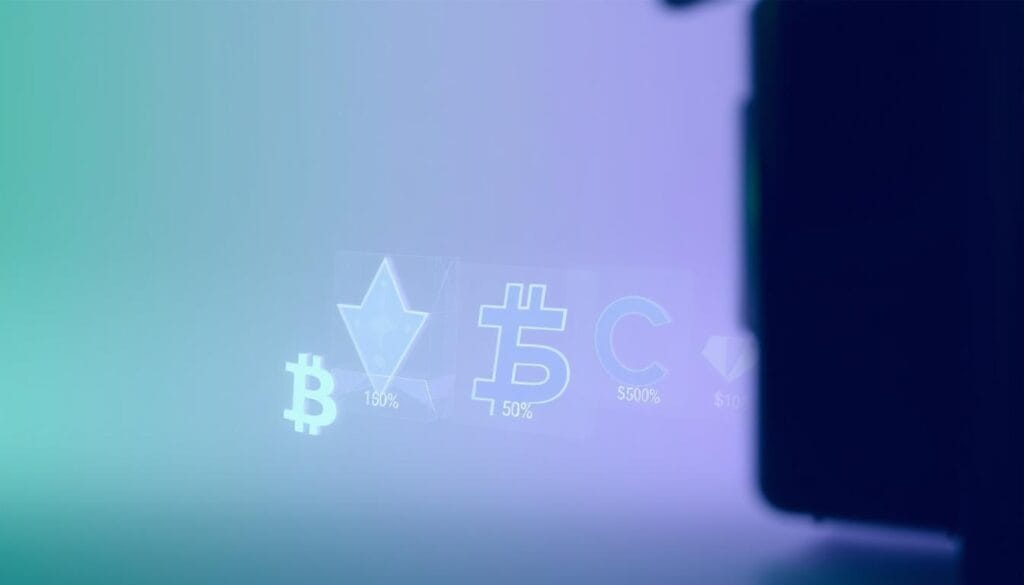
Understanding the financial implications of trading digital assets is crucial for both creators and collectors. The fees associated with these transactions can vary significantly across platforms, impacting the overall cost of participation. This section breaks down the key financial considerations, from transaction fees to hidden costs, and offers strategies to optimize expenses.
Transaction Fees Compared
Transaction fees are a primary concern for users. Platforms like Binance charge a 1% fee, while GameStop and LooksRare impose 2.25% and 2% respectively. These differences can add up, especially for high-volume traders. Additionally, gas fees on the Ethereum mainnet average $8.72 per mint, compared to just $0.03 on Polygon. This stark contrast highlights the importance of choosing the right platform for your needs.
OpenSea’s lazy minting feature has saved creators over $140 million in 2024 by deferring gas fees until the asset is sold. This innovative approach reduces upfront costs, making it easier for creators to list their work without significant financial risk.
Hidden Costs to Watch For
Beyond the obvious fees, there are hidden costs that can catch users off guard. Currency conversion spreads, for example, can range from 1.8% to 3.5%, adding to the overall price of a transaction. Failed transactions also incur penalties, further increasing expenses.
To mitigate these costs, users can employ strategies like batch transactions, layer-2 solutions, and off-peak minting. Axie Infinity’s Ronin sidechain, for instance, reduced user costs by 94% by optimizing gas fees. These techniques can significantly lower the financial burden of trading digital assets.
Regulatory changes also play a role. The EU’s MiCA compliance adds a 0.15% transaction surcharge, which users must account for in their budgeting. Staying informed about these factors is essential for minimizing costs and maximizing returns.
Blockchain Support and Compatibility
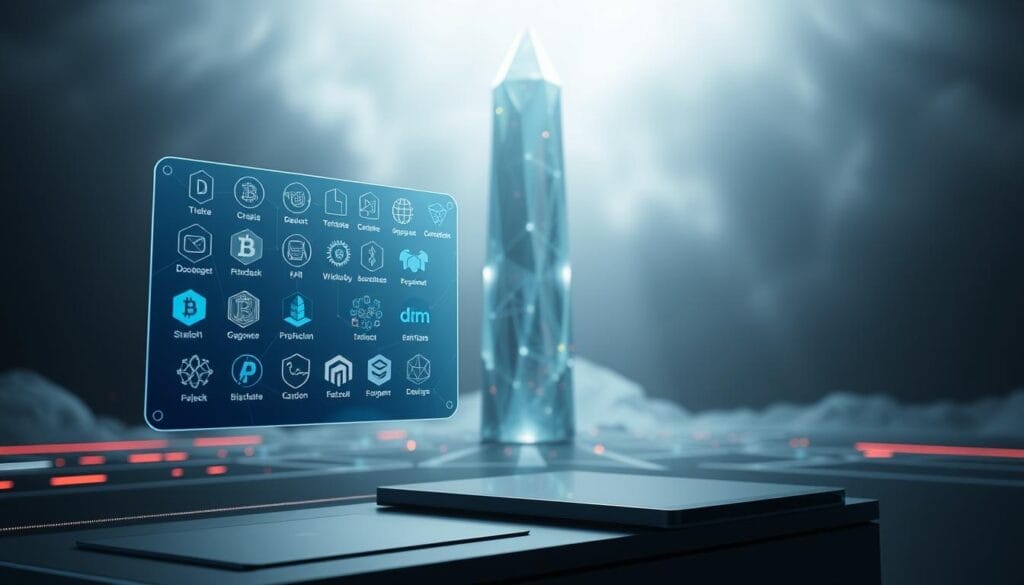
Blockchain technology continues to shape the digital world, offering diverse solutions for asset management and trading. As the crypto ecosystem evolves, understanding the strengths and limitations of different blockchains becomes essential. This section explores the key players—Ethereum, Solana, and Polygon—and highlights emerging trends that are redefining the market.
Ethereum vs. Solana vs. Polygon
Ethereum remains a dominant force in the blockchain space, known for its robust smart contract capabilities. However, its post-Merge throughput of 15 transactions per second (TPS) pales in comparison to Solana’s 2,846 TPS. Solana’s high-speed processing makes it a preferred choice for high-frequency trading.
Polygon, on the other hand, offers a scalable solution with its zkEVM technology, reducing gas costs by 90%. This makes it an attractive option for users seeking cost-effective transactions. Each blockchain has unique strengths, catering to different needs in the crypto world.
Emerging Blockchain Trends
Energy efficiency is a growing concern in the blockchain space. Tezos, for instance, is 2.4 million times more energy-efficient than Ethereum’s proof-of-work model. This shift toward sustainability is reshaping the industry, attracting environmentally conscious users.
Cross-chain bridges are another innovation gaining traction. Wormhole Bridge, with a total value locked (TVL) of $325 million, facilitates seamless asset transfers across chains. This interoperability enhances liquidity and accessibility, driving the future of decentralized trading.
Emerging layer-1 blockchains like Aptos are also making waves. Their parallel execution engine reduces transaction finality to just 0.8 seconds, offering unprecedented speed. As these technologies mature, they will continue to transform the digital asset landscape.
NFT Marketplace Royalties Explained

Royalties have become a cornerstone of fair compensation in the digital asset ecosystem. These payments ensure that creators receive a percentage of sales whenever their work is resold. However, enforcing these payments has proven challenging, with weekly royalty payments dropping to $3.8 million in 2023, according to Nansen.
Standard royalty rates typically range from 5-10% on secondary sales, though platforms like SuperRare charge up to 50%. This variation highlights the need for consistent enforcement mechanisms. For example, Rarible’s enforcement strategies boosted royalty payments by 585% in 2023.
Platforms are adopting innovative solutions to address these challenges. Blur introduced care package incentives to encourage compliance, while OpenSea implemented an operator filter to ensure royalty payments. These measures aim to protect creators and maintain trust within the community.
Legal developments are also shaping the landscape. California’s AB 721 mandates royalty disclosures, ensuring transparency in transactions. This legislation aligns with the growing demand for accountability in the digital asset space.
Emerging solutions like royalty escrow smart contracts are gaining traction. These contracts hold payments for 30 days, ensuring compliance before releasing funds. Such innovations are redefining how royalties are managed, offering a more secure and efficient system for all parties involved.
For more information on fair compensation policies, visit our terms and conditions page. As the digital asset ecosystem evolves, these advancements will continue to shape the future of creator compensation.
How to Choose the Right Marketplace for You
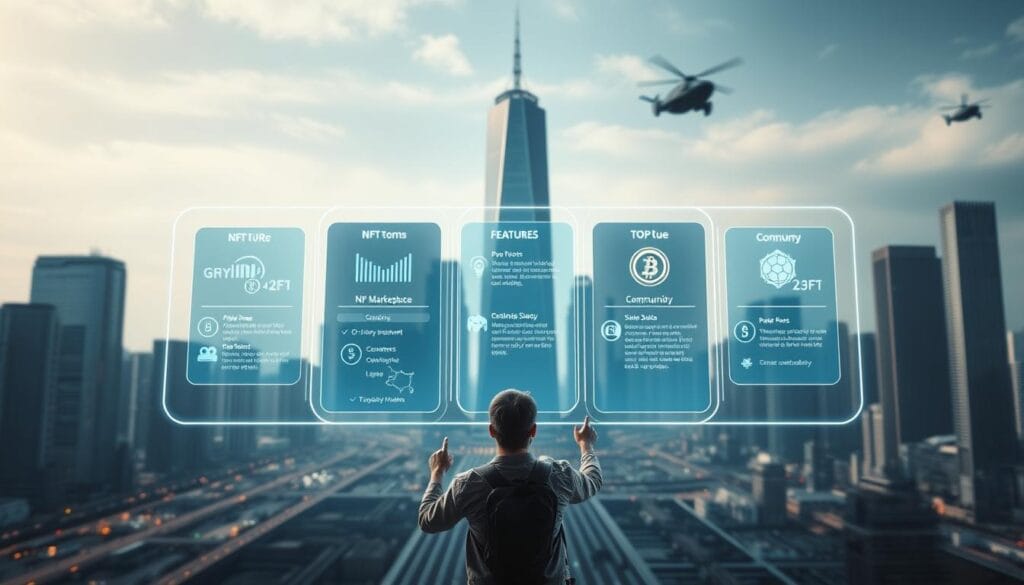
Selecting the right platform for digital assets requires careful consideration of user needs and platform features. Whether you’re a creator looking to showcase your work or a collector seeking valuable assets, understanding the nuances of each platform is essential. This section provides a decision matrix to help you navigate the options effectively.
For Artists and Creators
For creators, the platform’s minting costs and royalty enforcement are critical factors. Platforms like GameStop, with its Loopring integration, have reduced creator fees to just 0.25%. This makes it an attractive option for those looking to minimize upfront expenses.
Zora’s no-fee model has also gained traction, attracting over 28,000 artists in 2024. Its focus on community engagement and fair compensation aligns with the needs of many creators. Additionally, platforms offering security protocols, such as Ledger Live integration, provide added peace of mind.
For Collectors and Traders
Collectors should prioritize platforms with robust liquidity pools and historical price data. These features ensure that assets can be traded efficiently and at fair market value. Platforms like Blur offer advanced tools, including a portfolio rebalancing API, which is particularly useful for high-frequency traders.
For those interested in niche assets, platforms like Async Art specialize in programmable digital assets, catering to generative artists. This focus on unique offerings can provide collectors with exclusive opportunities. Understanding these features can help users make informed decisions based on their specific needs.
For more insights on optimizing your investment strategies, explore our guide on robo-advisor performance reviews. Choosing the right platform is a crucial step in maximizing your digital asset experience.
Niche NFT Marketplaces to Explore
Specialized platforms are carving out unique spaces in the digital asset world. These platforms cater to specific interests, from sports collectibles to high-end art, offering tailored experiences for their communities. This section highlights under-the-radar platforms that are redefining how users interact with digital collections.
Sports and Gaming Platforms
Sports collectibles have become a significant segment in the digital asset space. Platforms like Sorare, valued at $680 million, have partnered with major leagues such as the Bundesliga to offer exclusive trading cards. NBA Top Shot’s LeBron James Moment, which sold for $230,000, exemplifies the high demand for these assets.
Gaming-focused platforms are also thriving. ImmutableX has established a $500 million ecosystem fund to support Web3 games, fostering innovation in this sector. These platforms provide gamers with unique opportunities to own and trade in-game assets, creating a vibrant community of enthusiasts.
High-End Art Galleries
For art collectors, platforms like Christie’s 3.0 and Phillips Paddles offer exclusive access to high-end digital art. Sotheby’s Metaverse, averaging $14 million in monthly sales, has become a premier destination for elite collectors. These platforms ensure that creators receive fair compensation while offering collectors a chance to own rare pieces.
Virtual real estate is another growing niche. Decentraland’s record parcel sale of $2.4 million highlights the potential of this space. Music-focused platforms like Sound.xyz, which offers artists an 85% revenue share, are also gaining traction, providing a sustainable model for creators.
For those exploring investment opportunities, understanding how to choose the right tools is essential. As the digital asset world evolves, these niche platforms will continue to shape the future of collections and trading.
Future Trends in NFT Trading
The future of digital asset trading is being reshaped by emerging technologies and regulatory changes. AI integration is at the forefront, with AI-generated collections growing by 440% year-over-year. Platforms like Tensor are leveraging machine learning to identify undervalued assets, enhancing discovery and trading efficiency.
Regulatory frameworks are also evolving. The EU’s AML regulations now require KYC for trades exceeding €1,000, ensuring greater transparency in the market. Additionally, FATF’s Travel Rule mandates compliance for cross-border transfers, addressing security concerns in the crypto space.
Fractional ownership is gaining traction, with platforms like Otis offering SEC-compliant security token offerings. This trend democratizes access to high-value assets, allowing more users to participate in the market.
Metaverse integration is another key trend. RTFKT’s Nike Virtual Studios land parcels are setting new standards for virtual real estate, blending digital and physical worlds seamlessly. Sustainability initiatives are also shaping the future, with Polygon achieving carbon-negative blockchain status, addressing environmental concerns in the crypto ecosystem.
As these trends unfold, they will redefine how assets are traded and managed, creating new opportunities and challenges for users. Staying informed about these developments is crucial for navigating the evolving landscape of digital asset trading.
Conclusion
The digital asset ecosystem is evolving rapidly, with user experience and security becoming paramount. As 78% of 2025 trading volume occurs on the top five platforms, due diligence is essential for users to navigate this dynamic landscape1.
Key selection criteria include fees, security protocols, and chain compatibility. Platforms offering AI-curated and physical-backed assets are emerging as significant opportunities, reshaping how users interact with digital collections2.
For casual traders, platforms with intuitive interfaces and diverse asset options are ideal. Professional traders should prioritize advanced tools and low fees to optimize their strategies3.
Market consolidation is expected to reduce active platforms by 40% by 2026, driven by liquidity challenges and efficient price discovery4. Diversifying wallets and continuously monitoring the market are crucial steps to mitigate risks and capitalize on emerging trends.
FAQ
What are the key features to look for in a platform for trading digital assets?
Which platforms are leading the industry in 2025?
How do transaction fees vary across different platforms?
What blockchains are most commonly supported by these platforms?
How do royalties work for creators on these platforms?
What should artists and creators consider when choosing a platform?
Are there niche platforms for specific types of digital assets?
What trends are shaping the future of digital asset trading?
Source Links
- https://www.binance.com/en/blog/security/are-crypto-exchanges-safe-how-to-choose-an-exchange-you-can-trust-421499824684901426
- https://coinmarketcap.com/academy/article/9f341b70-49cf-4f12-bf2d-3a1d5622801e
- https://www.openmarketcap.com/choosing-crypto-exchanges/
- https://btcpeers.com/major-cryptocurrency-exchanges-consolidating-power-as-trading-volume-concentrates/

